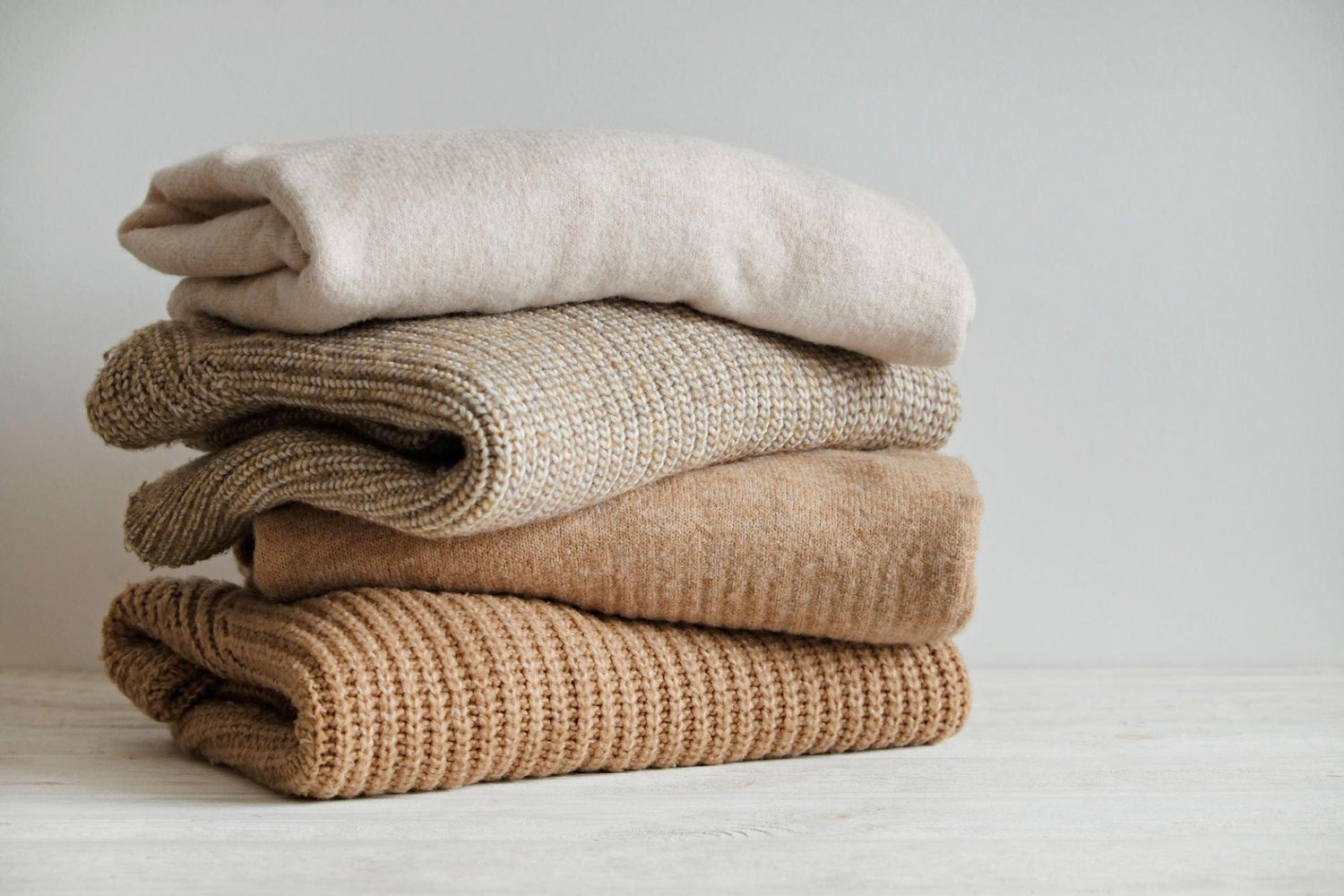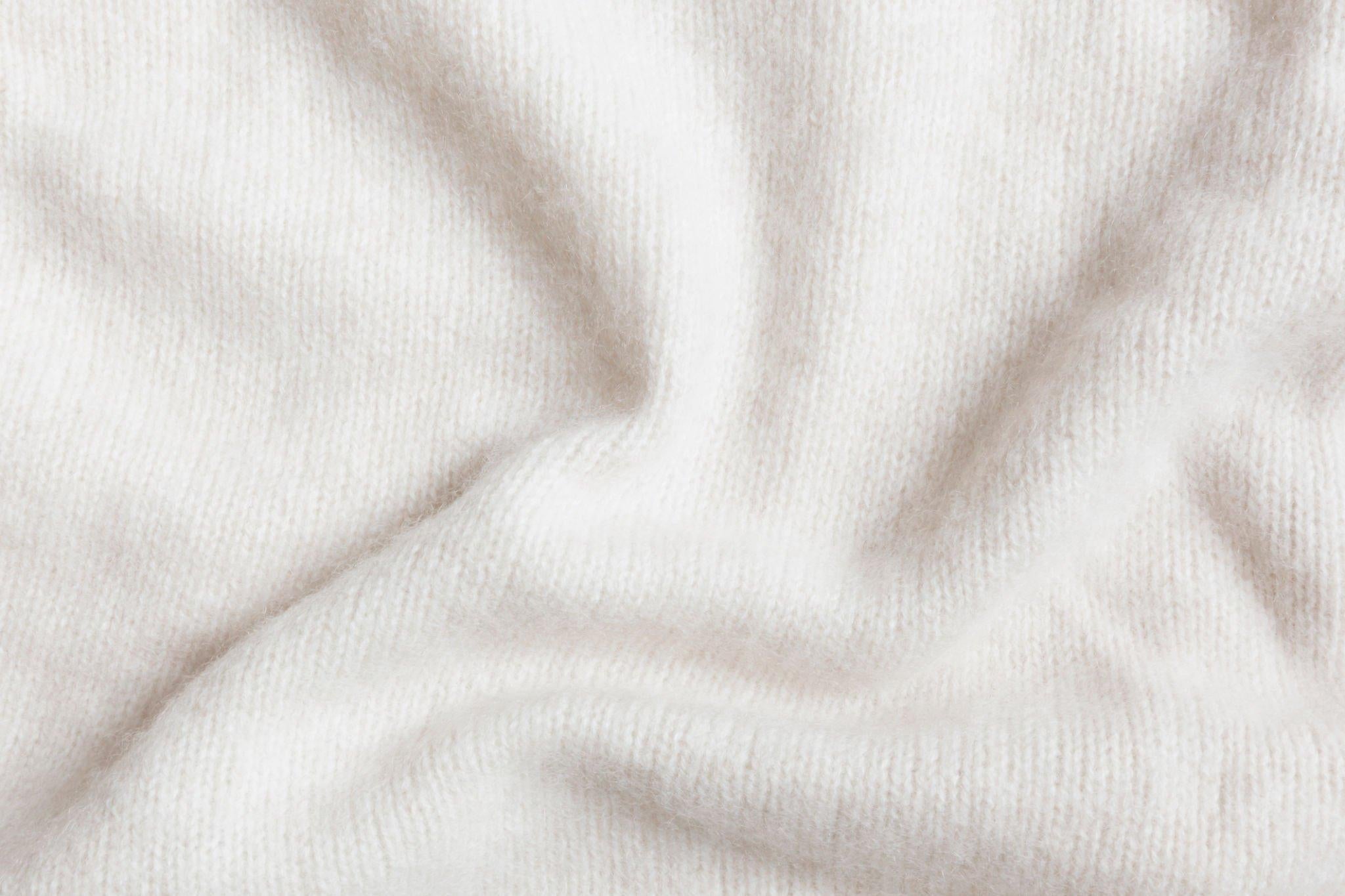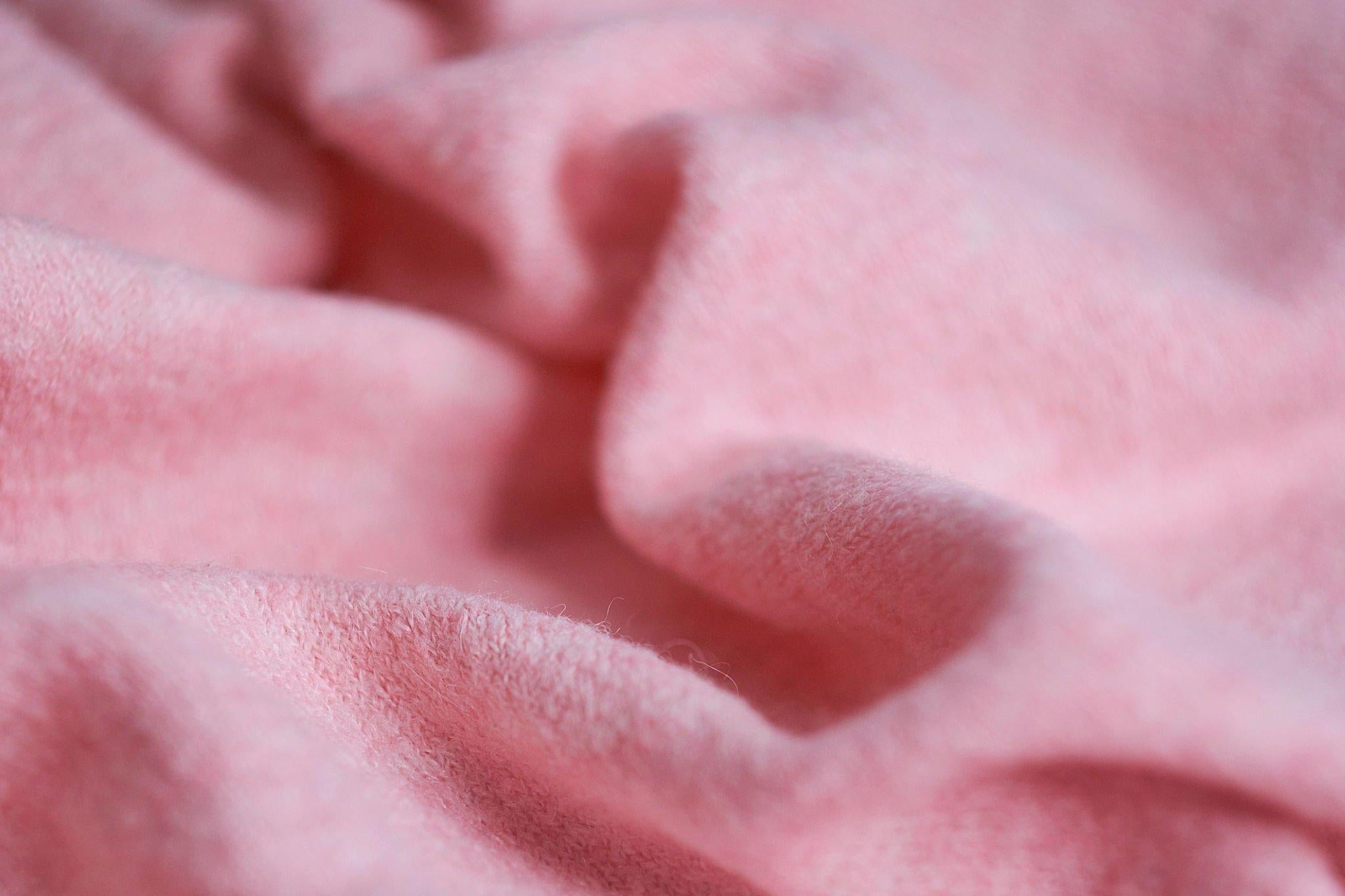Cashmere is synonymous to luxury and it's exceptionally soft, lightweight feel comes at a heavy price.
But what exactly is cashmere, where does it come from and why exactly is this fabric so much more expensive than cotton or wool?
In this article, we'll look into what cashmere is, and why authentic, high-quality cashmere commands lofty prices. We'll also share details about the production process, and painstaking craftsmanship that goes into creating the world's finest cashmere.
Let's get started...
What Is Cashmere?
Cashmere refers to the remarkably soft, downy wool that comes from the "Chyangra" goats in the Himalayas of Nepal. It's harvested from the fine undercoat of hair that grows as the goats' winter coat.
True cashmere wool fibers are extremely thin and delicate, with diameters of 18 microns or less. For comparison, the average human hair is around 100 microns wide. At Plushmina, we use the Grade A cashmere that measures 15 microns on average.
This fineness gives cashmere its signature featherlight, silky smooth feel. The thinner the fibers, the softer and more flexible the resulting cashmere fabric will be.
Where Does Cashmere Come From?
The finest, rarest, and most luxurious cashmere in the world comes from the remote Himalayan regions of Nepal. This exceptional Nepalese cashmere is known as Chyangra pashmina.
Chyangra goats that graze in the rugged Trans-Himalayan valleys and plateaus at altitudes over 4,000 meter produce incredibly soft, warm, and delicate undercoats each winter.
Chyangra pashmina fibers measure less than 15 microns in diameter, making them the finest cashmere fibers globally. The hand combing process used to collect the fibers also ensures no guard hairs are included, resulting in unmatched softness and purity.
While Mongolia and China account for about 90% of global cashmere production, Nepalese Chyangra pashmina is considered the pinnacle of luxury cashmere.
Its unparalleled quality comes from the rare goats and production methods perfected in Nepal over centuries. The limited supply adds to its coveted status as the crème de la crème of cashmere.
When you choose Chyangra pashmina, you invest in a rare heirloom-quality fiber meticulously crafted to achieve supreme softness and insulation. This makes it the ultimate fabric for creating exceptionally refined cashmere pieces.
Why Is Cashmere So Rare?
Cashmere's scarcity stems from the very specific conditions needed to raise cashmere-producing goats.
The goats require large areas of open grazing land with extremely cold winters and hot, dry summers. These conditions are found only in remote Central Asian regions, restricting where cashmere goats can live and graze.
Additionally, the goats only produce fine down fibers for a few short years. Their production peaks between ages 2-6. After that, the down hairs become too coarse for use as cashmere.
With such a small annual supply, cashmere is exceptionally rare. Only about 20,000 tons are produced worldwide each year. By comparison, 25 million tons of cotton and over 2 million tons of wool are produced annually.
Cashmere Production Is Time and Labor Intensive
The journey from goat to garment is long and intricate for cashmere. Every step of the process is painstakingly done by hand to preserve the delicate fibers' quality.
In the spring, cashmere goats begin shedding their winter down coats. To collect the loose hairs, combing and gentle brushing are done by hand. This removes only the ultra-fine undercoat and leaves the coarser outer hairs behind.
The harvested cashmere down then goes through multiple stages of processing:
- Washing/Drying: Removes dirt and impurities from the raw fibers.
- Carding: Separates and aligns the fibers to prepare them for spinning.
- Spinning: Twists the fibers into fine cashmere yarn.
- Weaving/Knitting: Turns the yarn into cashmere fabrics.
- Finishing: Further refines the fabric through steps like gilling or teaseling using natural teasels. This raises the fibers to improve softness.
- Dyeing: Adds color to create finished cashmere cloth.
- Manufacturing: Crafts the cashmere textiles into garments and accessories.
Skilled artisans are needed at each step to comb, card, spin, weave, and finish cashmere without compromising the fragile fibers' integrity. This adds tremendously to the time and costs of transforming raw cashmere into refined fabric.
What Determines Cashmere Quality?
When shopping for cashmere products, fiber diameter or "micron count" is the key marker of quality.
By law, wool must measure 19 microns or less in diameter to qualify as cashmere. Finer fibers under 15 microns are best, with the thinnest and most coveted cashmere graded at 14-16 microns.
Fiber length also affects quality. Longer fibers between 35-50 mm can be spun into stronger, smoother yarn. Shorter fibers under 35 mm result in lower grade cashmere fabric.
The thinner and longer the fibers, the finer the yarn, and the softer the resulting cashmere knitwear or textiles will feel. Micron counts and fiber length are telling signs of how your cashmere will look, feel and wear.
What Makes Cashmere So Luxurious?
Cashmere's peerless luxury lies in its rarity and incredible softness. But there are other properties that enhance its status as the crème de la crème of wool fabrics.
Cashmere provides exceptional warmth without bulk or weight. The fluffy texture also resists creasing and keeps its loft. It has a subtle sheen that gives it added depth and dimension.
The fabric is durable yet delicate, able to be spun into gossamer-fine layers. Cashmere can be layered without causing overheating. All of this combines to create a fabric with unrivaled comfort and versatility.
Cashmere Garments Require Skilled Craftsmanship
Another factor that drives up costs is the expertise needed to make fine cashmere garments.
Nimble-fingered artisans use special techniques to knit, crochet, weave, and sew cashmere while preserving the integrity of the fibers. The result is meticulously made cashmere sweaters, scarves, dresses, and more.
For the most luxurious cashmere pieces, extra steps are taken to finish and refine the fabric and garments:
- Hand-framed knitting using artisanal techniques.
- Metallic or real gold/silver threads woven into embroidered patterns.
- Edge finishes like delicate picot hems on cashmere scarves.
- Creative textural elements like cable knits or matching intarsia designs.
- Hand-sewn fine details using the finest needles and threads.
This level of quality craftsmanship doesn't come cheap. But it results in heirloom cashmere pieces of unparalleled beauty, softness, and longevity.
The Investment Value of Cashmere
When properly cared for, investment-worthy cashmere can last for generations and become family heirlooms. This makes the initial splurge on luxury cashmere worth it in the long run.
With investment cashmere, you pay for more than the fabric. You pay for artistry, sustainability, ethical production, and the countless hours of labor that go into making a truly exceptional piece.
The resulting cashmere garment makes the perfect forever find. Choosing investment cashmere means choosing a meaningful piece offering a lifetime of enjoyment and wearing memories.
So while the price tag is high, authentic luxury cashmere delivers lasting value that outweighs the initial cost over time. When treated as a treasured heirloom, that refined cashmere sweater or scarf becomes priceless.
The Bottom Line
In the end, cashmere’s hefty price comes down to:
- Scarce global supply
- Intensive hand production
- Extremely fine rare fibers
- Unsurpassed softness and luxury
- Artisanal craftsmanship and expertise
- Enduring investment value
For all these reasons, cashmere remains one of the most coveted and luxurious fabrics in the world. When you consider what goes into creating the finest cashmere, the splurge becomes well worth it for a fabric you'll cherish forever.


